INTRODUCTION
"REPRESENTATION OF WOMEN IN FILM AND MEDIA: THE IMPACT ON VIEWERS THROUGH THEIR SELF-IDENTITY, SELF-WORTH, AND GENDER ROLE EXPECTATIONS" is an MFA arts-based research study focusing on how audience members interpret protagonists of different genders.
Audiences of all ages are affected by what they see on screen. Viewing stereotypes perpetuated by various media can influence audiences' societal perspectives of people's "gender role expectations.”1 For instance, when female characters are minimally (and poorly) represented on screen, it leads to harmful internalized and externalized biases towards women in real life.
METHODS
Cunial conducted a study to test her theory that misrepresenting female roles in film and media can impact gender role expectations in real life. She created two identical short films, each featuring a different gendered protagonist, to test viewers' subconscious gender bias. The animated musical film, titled Big Little Show, follows the story of a playwright in the 1950s who writes the perfect script but gets rejected by big-time producers. The writer must find a way to overcome the rejection by producing their play in a small-but-mighty way.
For this study, Cunial recruited 43 participants. Of the 43 participants, 53 percent of participants identified as female, while 47 percent identified as male. Participants identified as white or Caucasian, black or African American, Asian or Asian American, or as another race and hailed from Ontario, Quebec, British Columbia, and Michigan. The participants' ages ranged from Generation Z (ages 16 to 26), Millennial (ages 27 to 41), Generation X (ages 42 to 56), Baby Boomer (57 to 75), and Silent Generation (ages 76 to 93). Each participant was assigned a group based on their age demographic. The groups were then divided into two and given a link to either Film A or Film B; neither group was aware that another version existed.
Through short answer surveys and online qualitative focus group discussions, she explored how audiences interpreted the events of the film to which they were assigned. Every participant completed the survey; participants also had the choice to take part in the focus group discussion. The same questions on the survey were asked in the focus group.
During the study, I asked participants questions such as "What is the story about?" "What adjectives would you use to describe the main character?" and "Why do you think the writer got rejected in the story?" (see survey in the Appendix). I hypothesized that viewers' opinions of the story would differ depending on the main character's gender, and that older generations would assume gender had a part to play in the female protagonist's rejection.
___________
1. Laramie D. Taylor & Tiffany Setters, “Watching Aggressive, Attractive, Female Protagonists Shapes Gender Roles for Women Among Male and Female Undergraduate Viewers” (California, USA, Springer, 2011)
___________
1. Laramie D. Taylor & Tiffany Setters, “Watching Aggressive, Attractive, Female Protagonists Shapes Gender Roles for Women Among Male and Female Undergraduate Viewers” (California, USA, Springer, 2011)
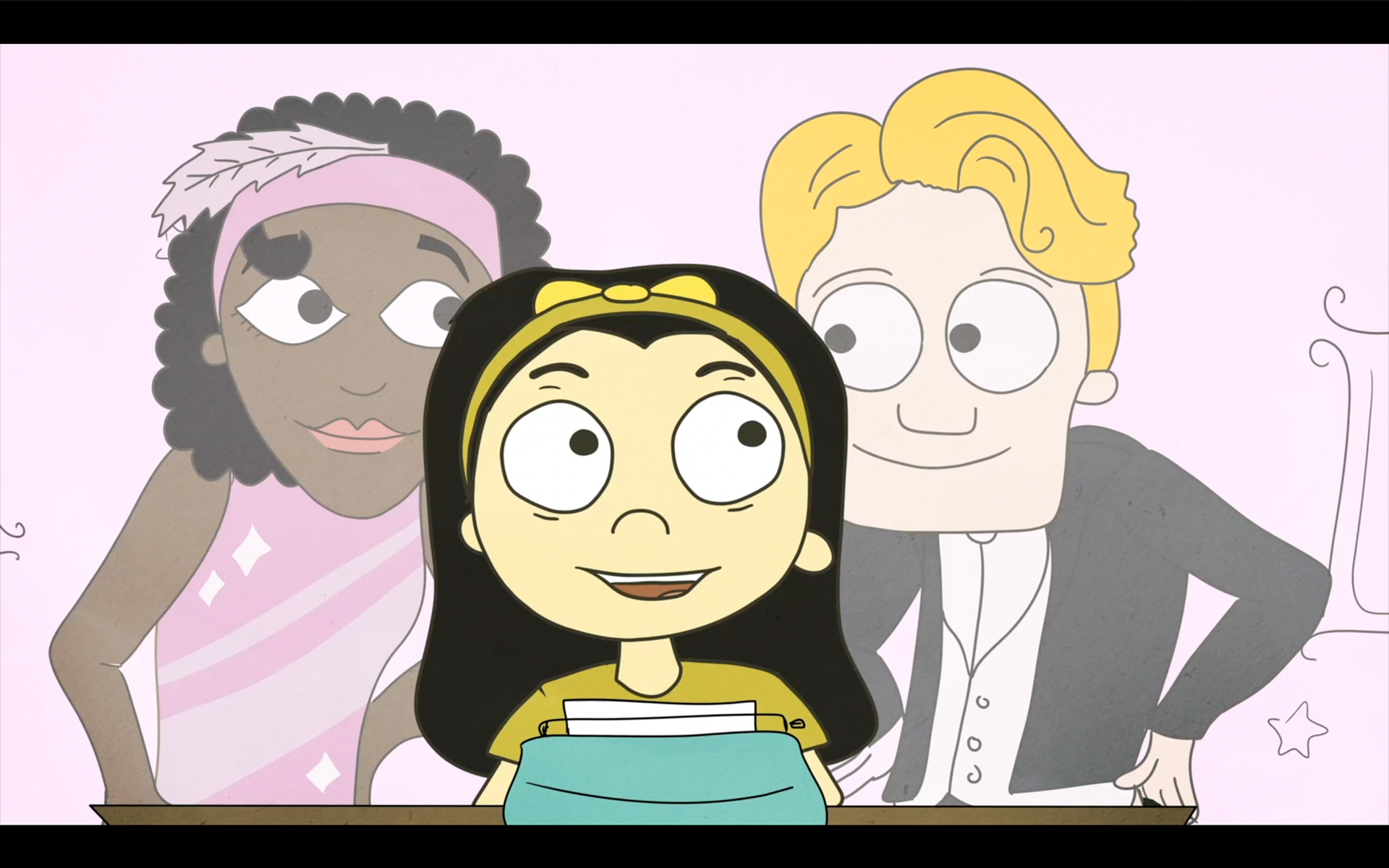
Film A (Female Protagonist)
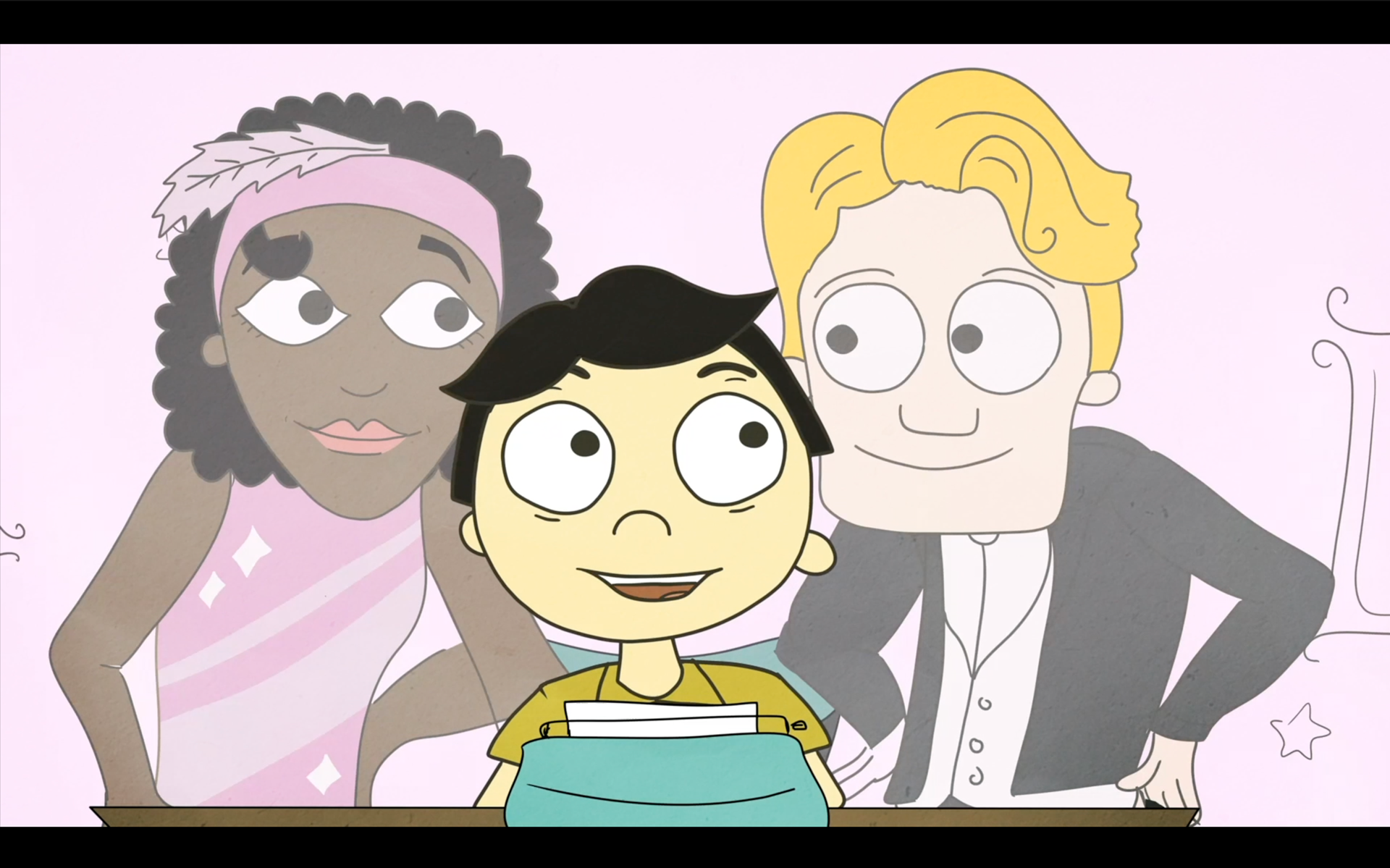
Film B (Male Protagonist)
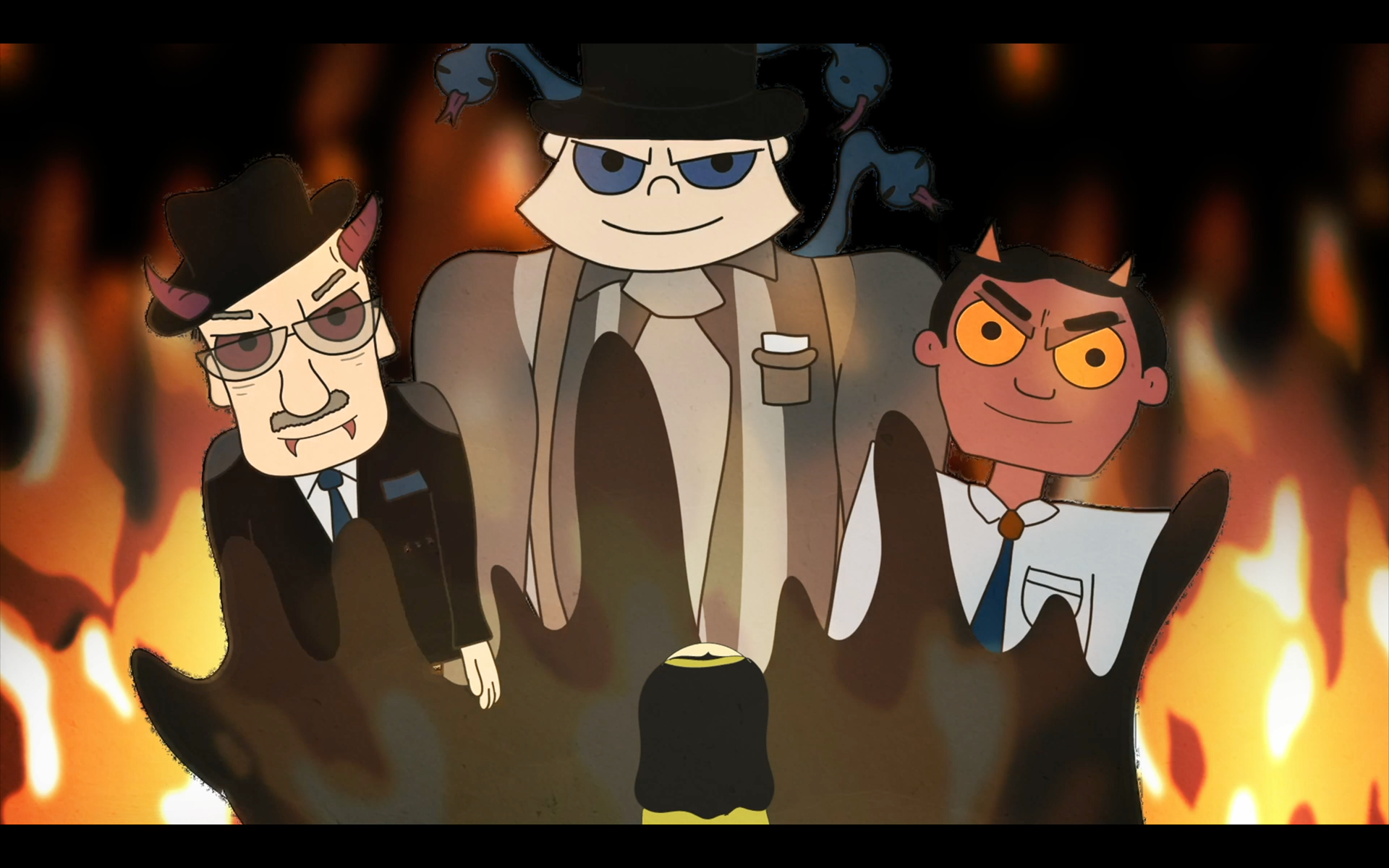
Film A (Female Protagonist)
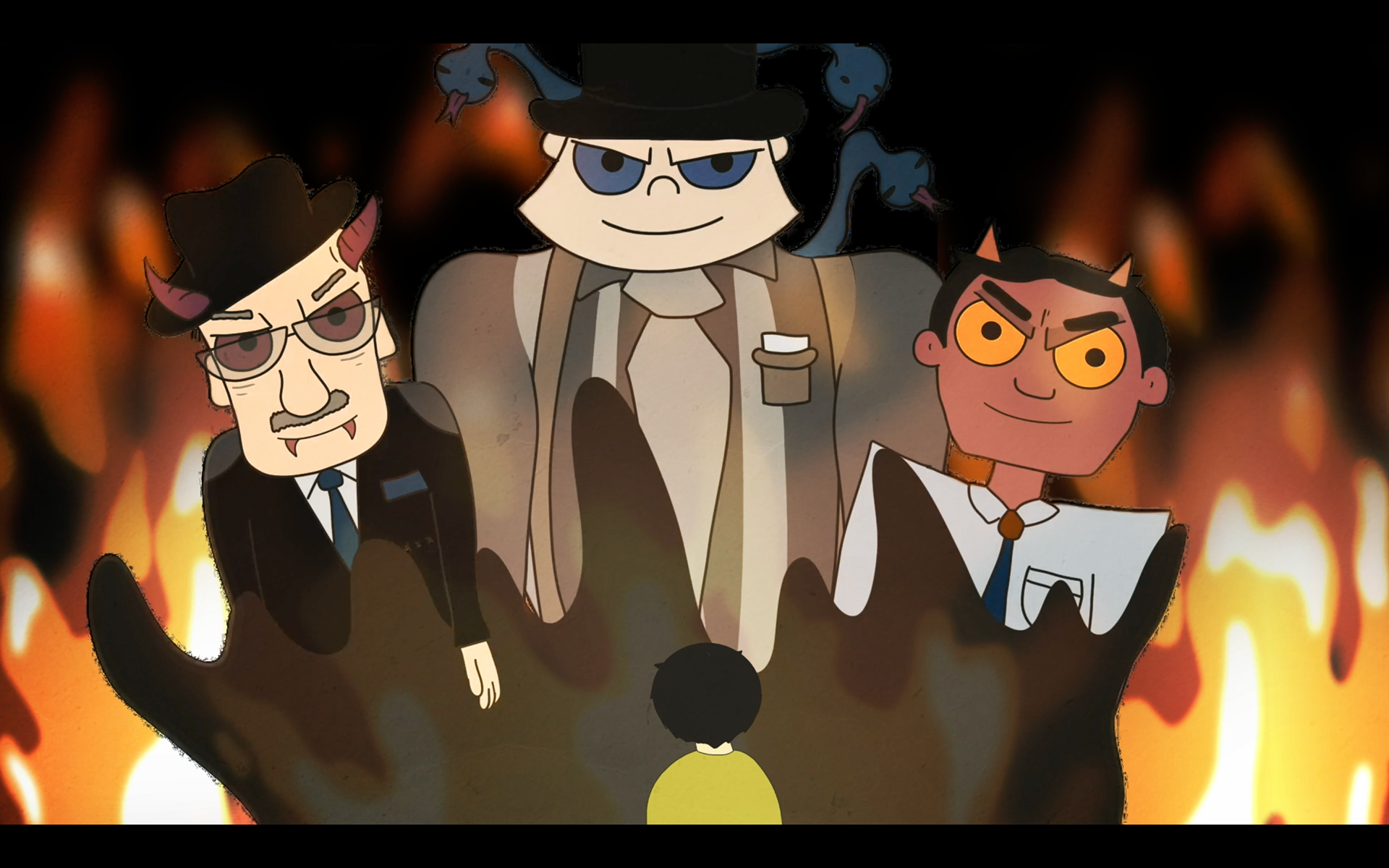
Film B (Male Protagonist)
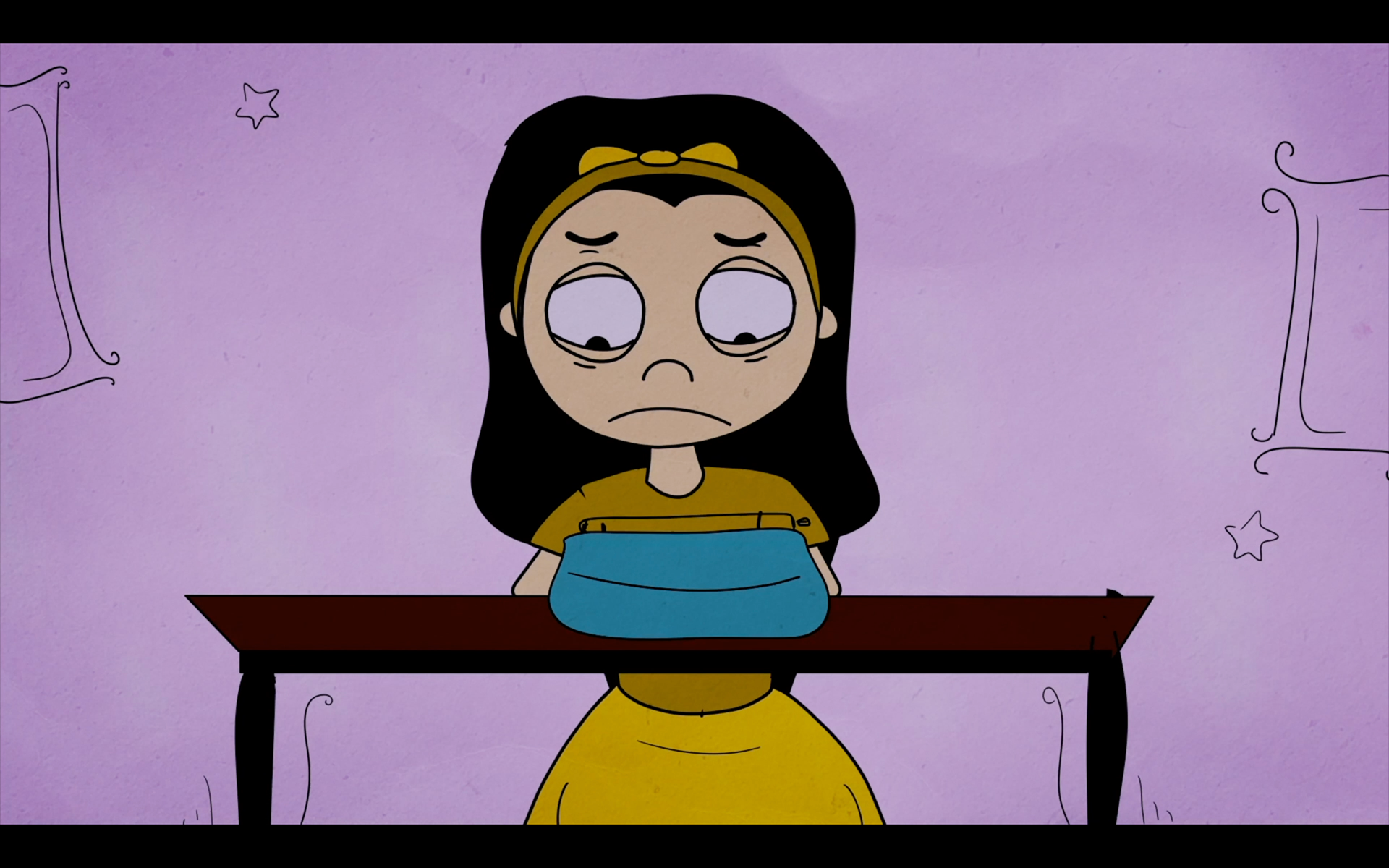
Film A (Female Protagonist)

Film B (Male Protagonist)
RESULTS
Based on the results of the surveys and focus group discussions, Film B viewers largely concluded that there were THREE reasons for the rejection. The most common answer was the male writer's unoriginal story, followed by nepotism and mean-spirited producers. During the focus groups, one participant noted that the story received the rejection, not the writer himself. Based on Film A's surveys and focus groups, participants concluded there were EIGHT reasons why the rejection took place. Participants suggested it was the fault of the mean-spirited producers, the race of the female writer's heroine character, the female protagonist's age, lack of confidence, "Weinstein-ism" (which participants defined as knowing the price of fame through favours), and nepotism. The most common reasons for rejection in Film A were a story that lacked originality and the protagonist’s gender. However, none of the participants who watched Film B mentioned anything about his physical attributes, let alone his gender.
When looking deeper into Film A's survey results, 12 percent of Gen Z participants mentioned that the writer's rejection was due to gender. Interestingly, 40 percent of Millennials, 43 percent of Gen X, and 60 percent of Baby Boomer and Silent Generation participants stated her gender was a possibility for her failure. In comparison, 30 percent of Gen Z, 50 percent of Millennials, 60 percent of Gen X, and 75 percent of Baby Boomer and Silent Generation viewers who watched Film B claimed the writer's reason for rejection was the story’s lack of originality.

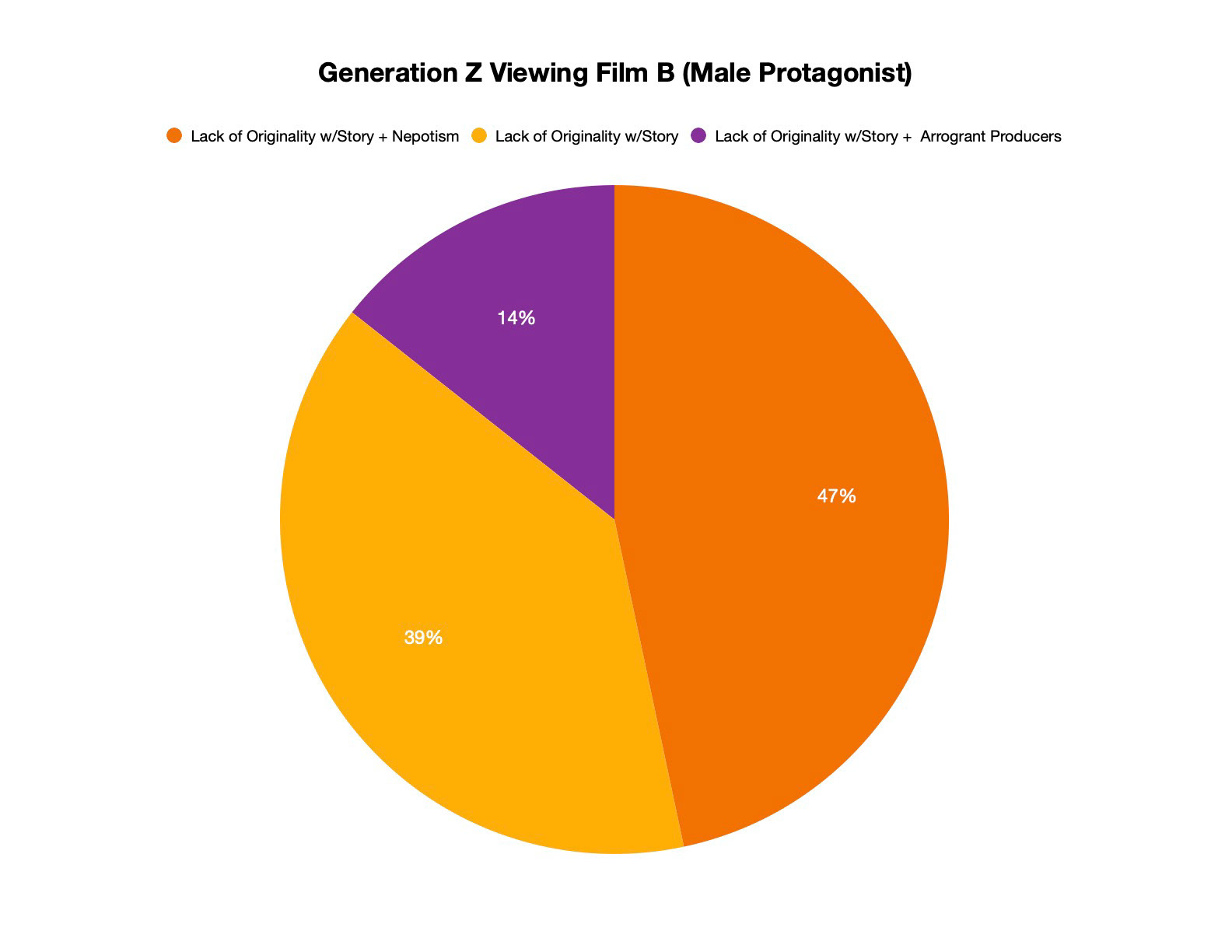
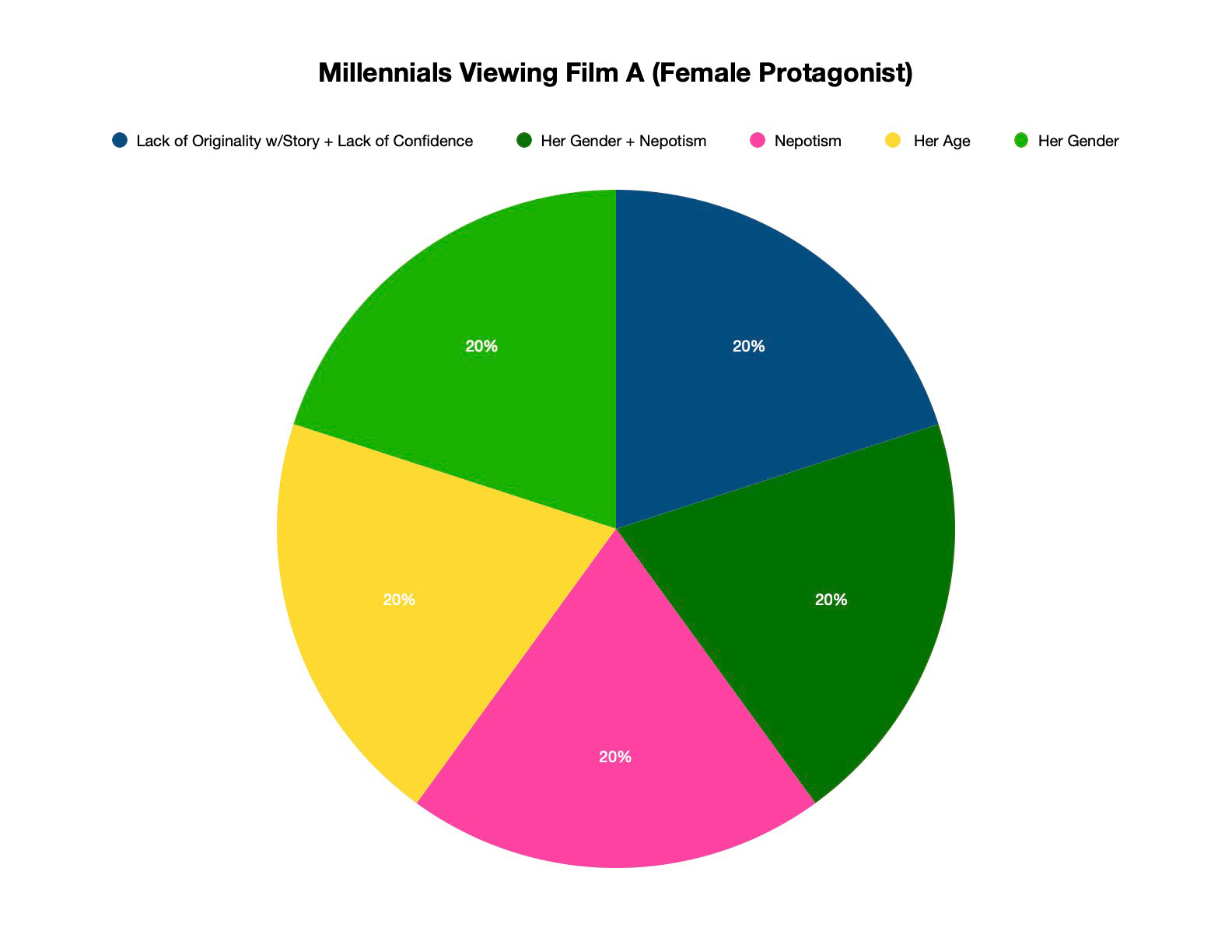
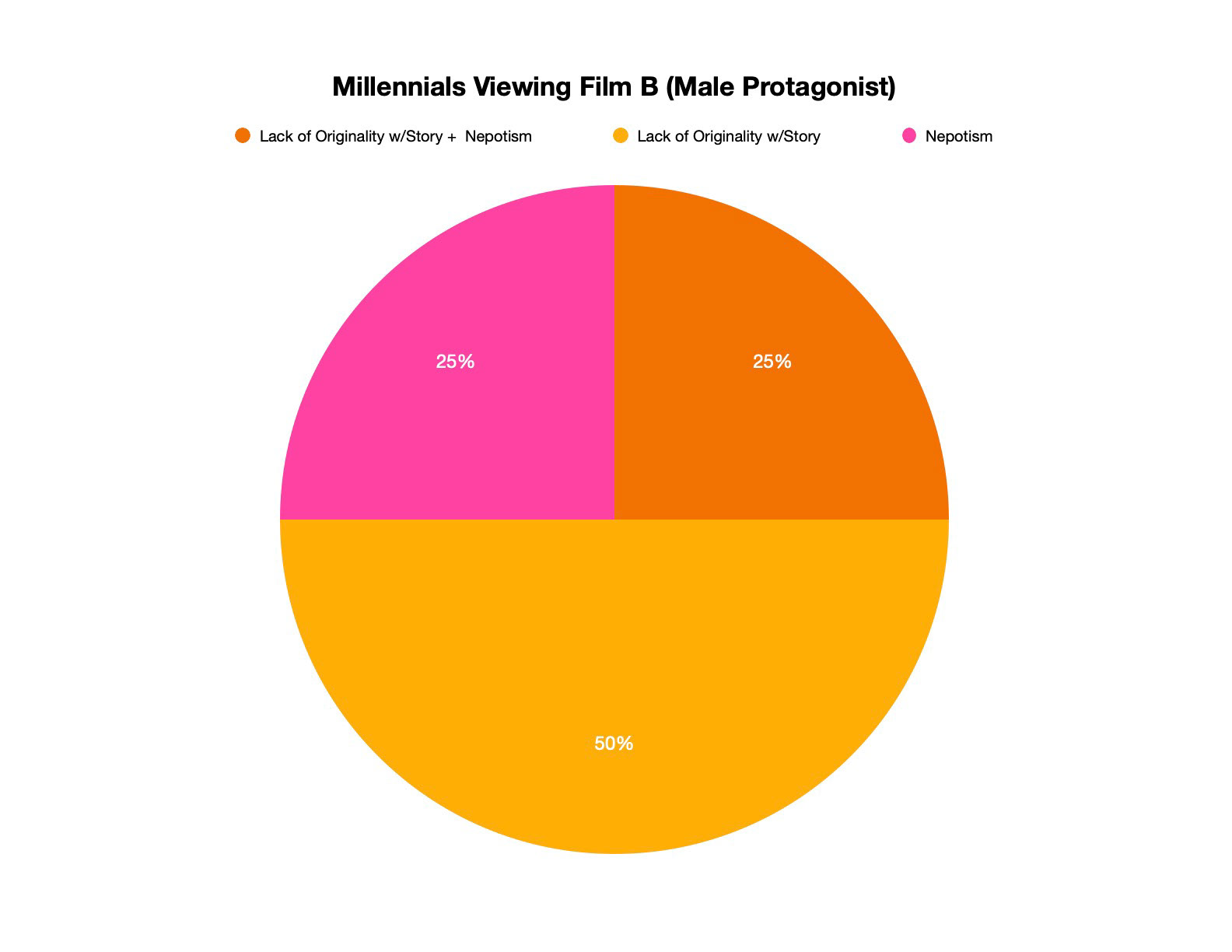
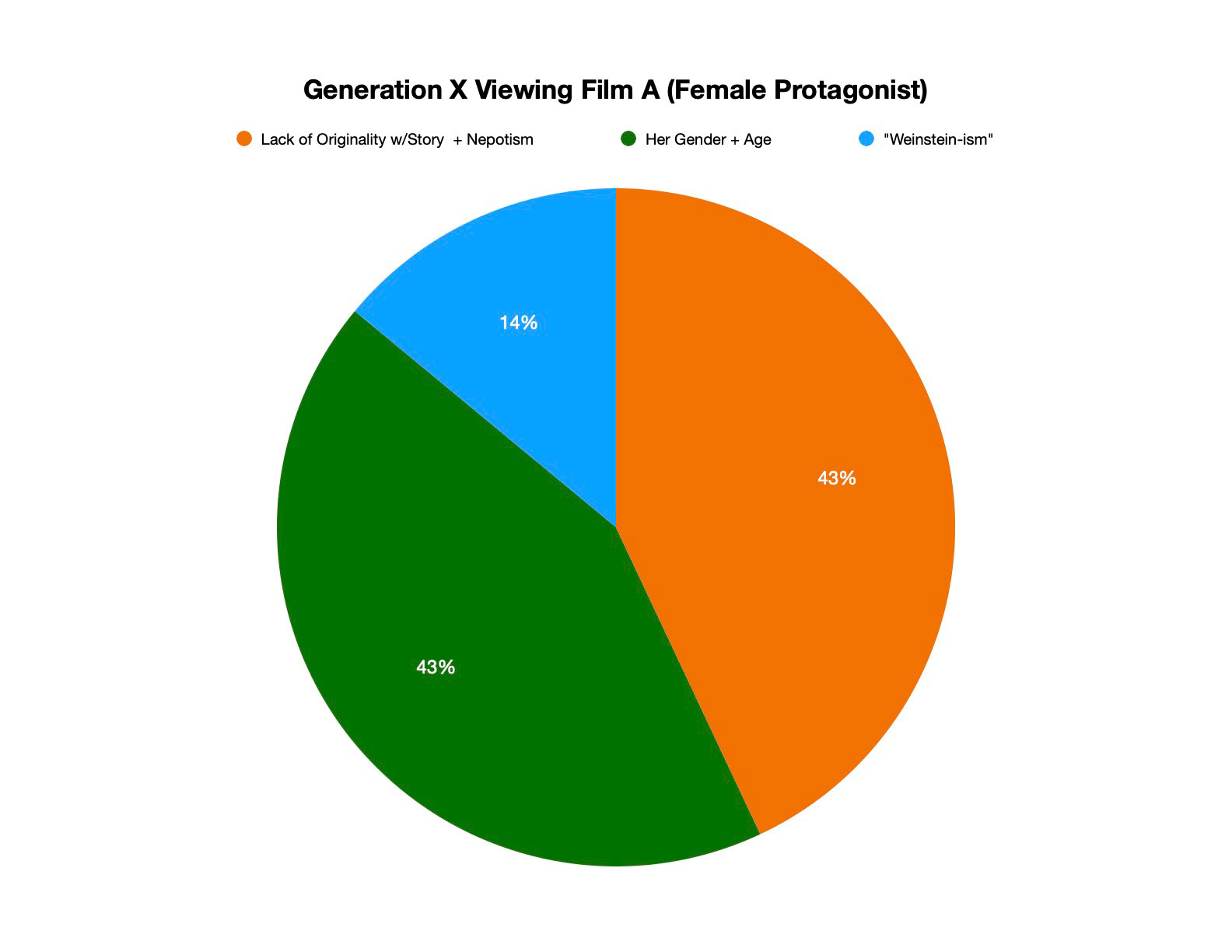
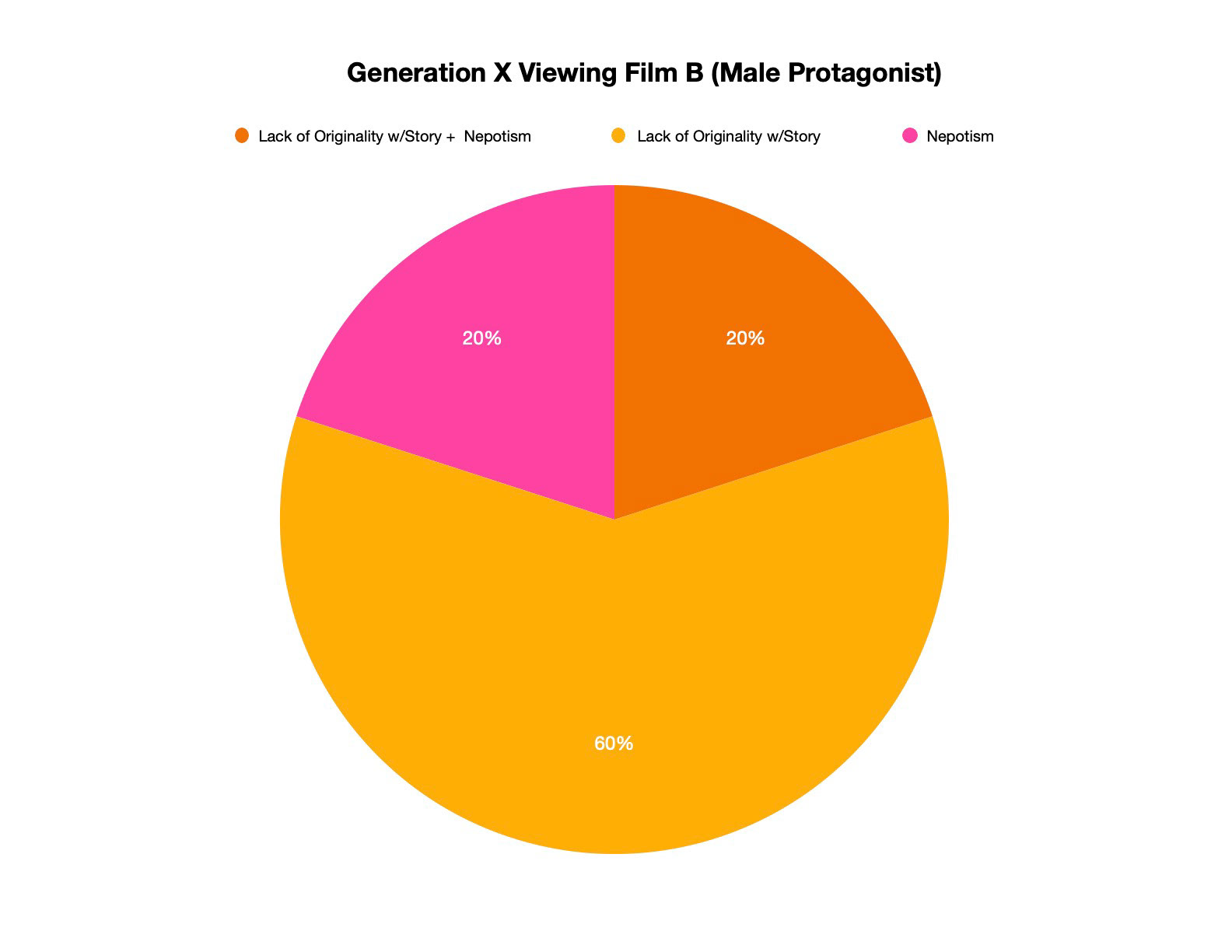
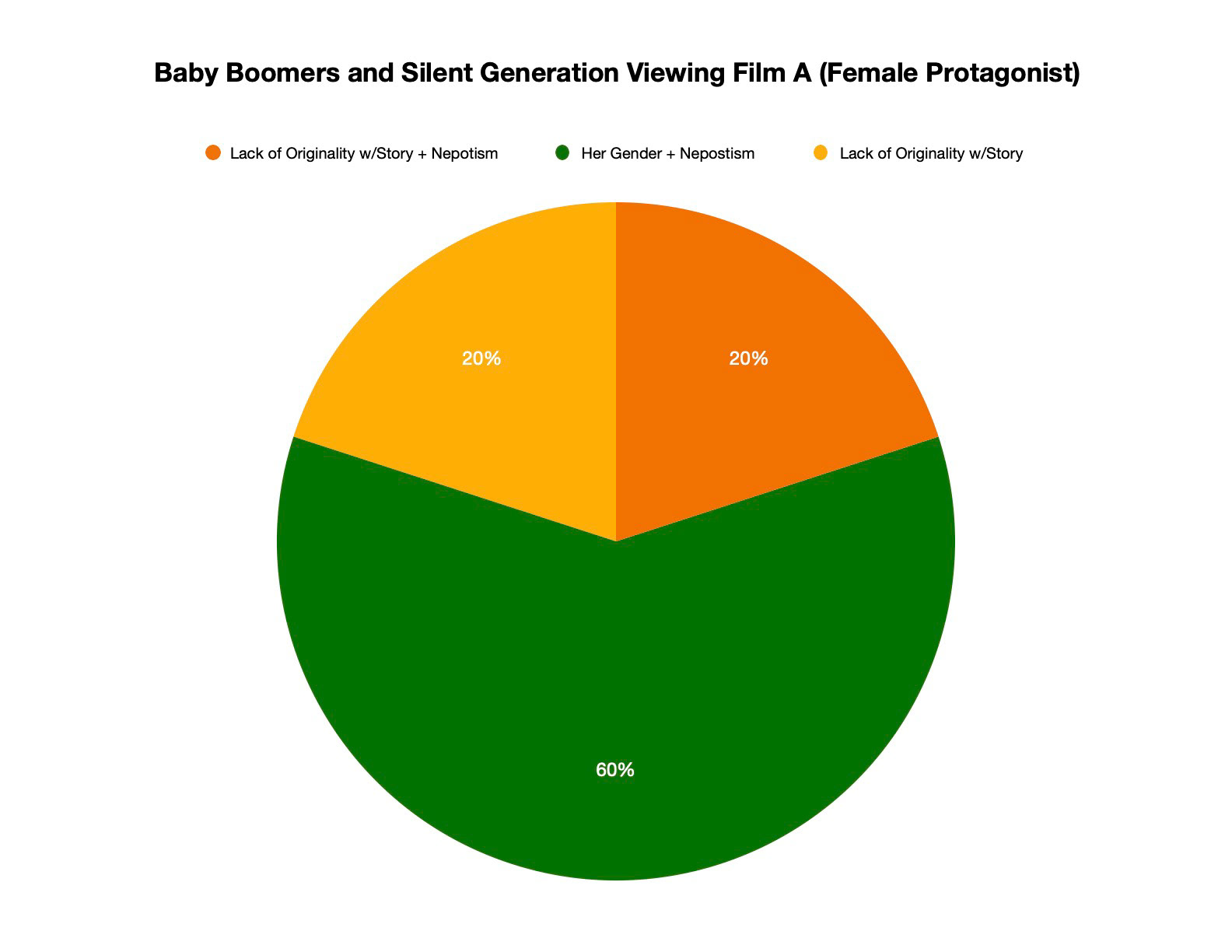
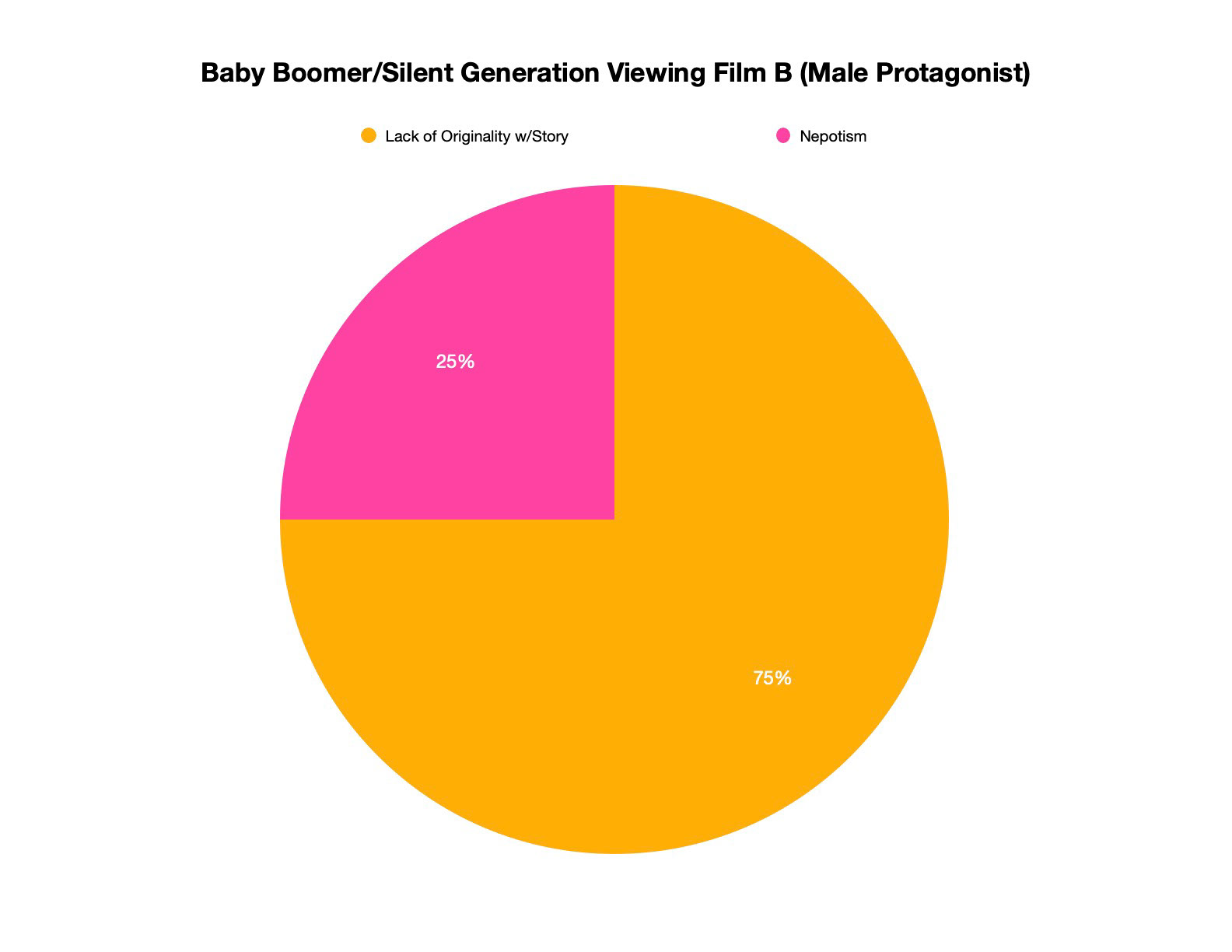
When participants were asked to describe their assigned protagonist using adjectives, both protagonists shared some common words. The most common adjectives used to describe both characters were "passionate," "hopeful," "determined," and "optimistic." The female protagonist was also said to be "brave," "strong," "sweet," and "cute," while the male protagonist was described as "innocent," "a believer," and "a dreamer." The male protagonist seems romantic, timid, sensitive, and follows his heart, while the female protagonist is described as self-motivated, smart, and industrious, aiming to break the status quo.

Film A (Female Protagonist) Adjectives

Film B (Male Protagonist) Adjectives
*The larger a word appears, the more often it was used by participants
CONCLUSIONS
The research study offered interesting results. Despite the films being identical (except for the protagonists’ gender), participants perceived the character’s struggle differently. This would suggest that gender played a role in the viewers’ interpretation of the film. Some audience members, mostly older generations, appear to be more aware of the barriers faced by female creators. The adjectives chosen for the male protagonist indicate that he is in over his head solely due to his age and lack of experience; he is a young man with a dream. The female protagonist is also perceived as having a lack of experience, yet she is described as “courageous” instead of a “dreamer.” This implies that the female protagonist had more of an obstacle to overcome than the male; it was heroic for a young woman to face three brutish male producers.
It appears that younger generations look past the protagonist’s gender and focus on other reasons for rejection. 64 percent of Gen Z participants who viewed Film A suggested the writer’s unoriginal script was the reason for rejection. Meanwhile, 100 percent of Gen Z participants who viewed Film B indicated that the rejection was solely based on the protagonist’s cliché story. In comparison, 60 percent of Baby Boomer and Silent Generation viewers who watched Film A acknowledged the obstacles the writer faced were possibly due to her gender. It is still interesting to see how their interpretations differed from those who viewed Film B. The participants who watched the male protagonist never mentioned his gender as a possible reason for rejection because of our fundamental understanding of bias in society. Men not receiving a job or opportunity solely based on their gender was unheard of. According to participants, the male protagonist is a young, passionate-yet-inexperienced writer who wrote a generic story and possibly fell victim to nepotism; the female protagonist was interpreted as a perseverant-yet-soft young woman. Participants eluded that when a young woman tries to pursue her passion, she is courageous, but when a man tries to, he is unrealistic.
These data leads to some interesting questions: are younger generations overlooking women's obstacles based on gender? Does the greater awareness of gender bias exhibited by older generations reflect a cultural concern connected to their generation, or is it front of mind as a result of lived experience, and therefore not a feature of a particular generation’s societal conditioning but a feature of understanding that comes from past experience? If younger generations ignore or overlook gender-specific obstacles, will it undermine women and hinder the feminist movement? Do the younger participants' assessments reflect an attitude that these gender-specific issues no longer exist, or are they naïve to these scenarios because they have not yet encountered gender-related obstacles in their lives? Even during the fourth wave of feminism (equality between all genders), women behind the camera are still fighting for recognition, even with gender parity enforcement in place.2 Yet, globally over the past dozen years, 93.4 percent of the top grossing film directors are male.3
Though Big Little Show's lyrics and story are identical, the film was interpreted in different ways. When I wrote the film, I made a conscious effort to make the reason for the writer's rejection ambiguous, there is no correct answer as to why the writer was rejected. I did this to allow the viewer to come to their own conclusions about the rejection and see if they had any biases. Rejection should be a universal experience that is relatable to everyone. However, my findings suggest that some viewers see possibilities for rejection differently due to gender expectations.
Full the full research summary, click here.
___________
2. Gender parity in Canada’s film and television production industry (Government of Canada, 2019)
3. Women’s Media Centre, The Status of Women in the U.S. Media 2019 (New York, NY., 2019), 131
3. Women’s Media Centre, The Status of Women in the U.S. Media 2019 (New York, NY., 2019), 131